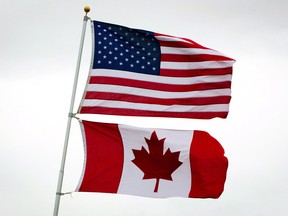The recent data released by Statistics Canada reveals that Canada’s trade surplus with the United States has widened, while its deficit with the rest of the world has also increased. This underscores the significant role played by the country’s biggest trading partner and southern neighbor in its economy.
Canada’s Trade Surplus with U.S. Reaches $8.2 Billion
In November, Canada’s exports to the United States rose by 6.8% compared to the same period last year, while imports from the U.S. increased by 4.1%. The widening of the trade surplus with the U.S. is largely attributed to a significant rise in gold shipments. As a result, the trade surplus reached $8.2 billion, up from $6.6 billion in October.
U.S. Remains Canada’s Largest Trading Partner
The United States continues to be Canada’s largest trading partner, accounting for a substantial portion of its international trade. The recent data highlights the importance of the U.S.-Canada trade relationship and the need for both countries to maintain open and fair trade practices.
Canada’s Deficit with Rest of World Increases
While Canada’s trade surplus with the United States has widened, its deficit with other countries has also increased. Exports to countries other than the U.S. fell by 10.3% in November, driven primarily by lower exports of gold to Hong Kong and nickel to Norway.
Import Data Affected by CBSA Initiative
Statistics Canada has cautioned that a recent initiative by the Canada Border Services Agency (CBSA) to improve data collection methods may have impacted import statistics for October and November. The agency also noted that the depreciation of the Canadian dollar since October has affected both import and export data.
Economists Weigh In on Trade Data
Andrew DiCapua, senior economist at the Canadian Chamber of Commerce, commented on the recent trade data: "Canada’s merchandise exports have gone up again, thanks to higher prices and a weaker dollar. But because CBSA changed how they collect data, it’s tough to pinpoint any clear trends for the last few months of 2024."
Stephen Brown of Capital Economics also weighed in on the data: "The third consecutive rise in export volumes in November provides further evidence that the economy was gaining momentum at the end of last year. However, US tariffs could cause the recovery to go into reverse this year."
Tariff Threat Looms Large
As the United States and Canada continue to navigate their trade relationship, the threat of tariffs looms large. Trump’s tariff policy has been a contentious issue in recent years, with the U.S. imposing tariffs on various Canadian products.
Benjamin Reitzes, rates and macro strategist at Bank of Montreal, noted: "Nothing here changes my view of another rate cut by the Bank of Canada in January. However, things could get murky after that with the Canadian dollar already much weaker."
Conclusion
Canada’s trade surplus with the United States has widened, while its deficit with other countries has increased. As both countries continue to navigate their trade relationship, it remains to be seen how this will impact future economic growth and trade policy.
Share Your Thoughts
Do you think the widening of Canada’s trade surplus with the U.S. will have a significant impact on the country’s economy? What do you make of Trump’s tariff threat and its potential implications for Canadian trade?
Please share your thoughts in the comments section below!
Recommended Reading
- Pierre Poilievre makes energy pitch to Trump
- Trump’s tariff threat and Canadian severance negotiations
This article was written by [Author Name] and edited by [Editor Name].







